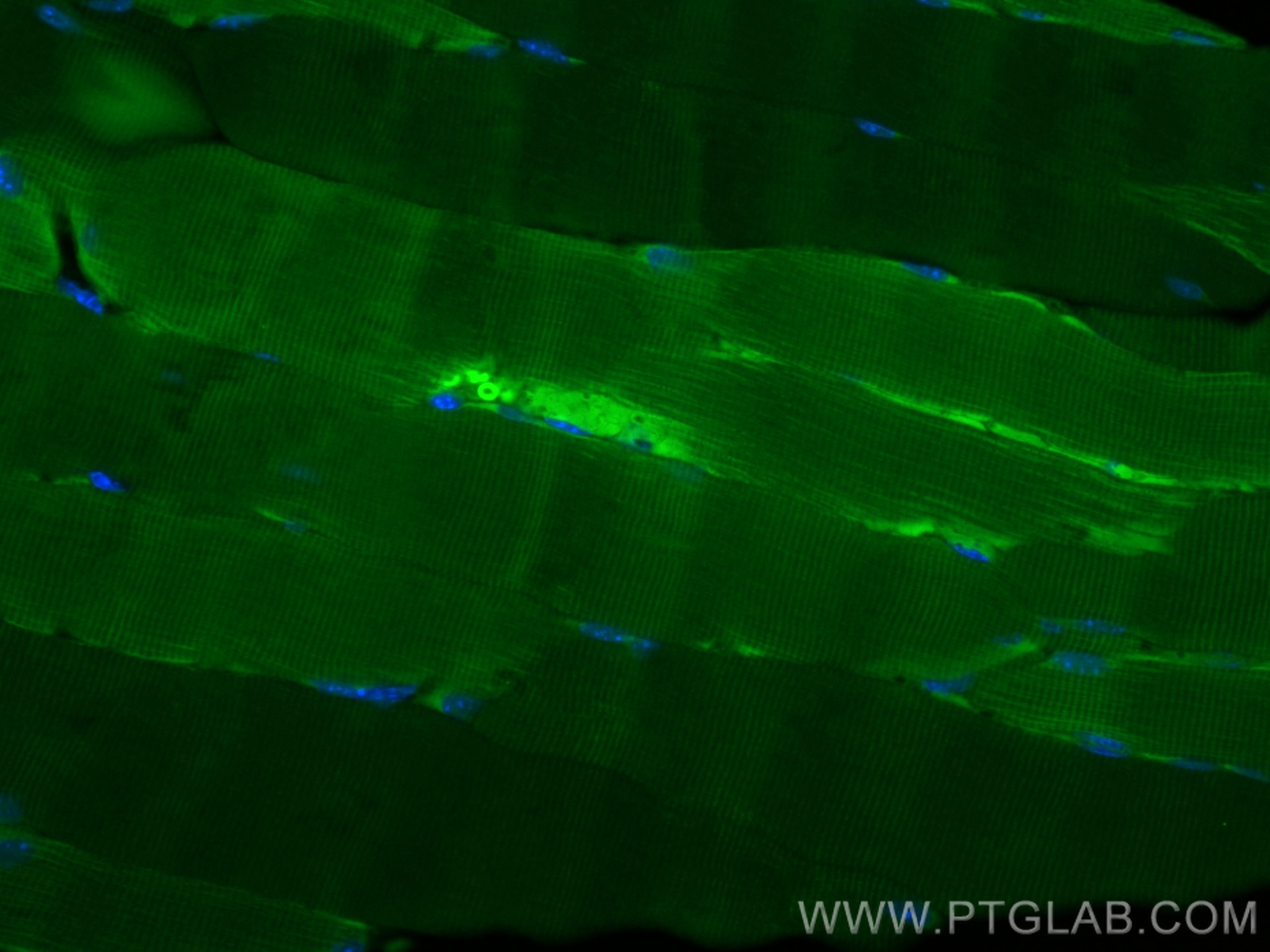Tested Applications
| Positive IF-P detected in | mouse skeletal muscle tissue |
Recommended dilution
| Application | Dilution |
|---|---|
| Immunofluorescence (IF)-P | IF-P : 1:50-1:500 |
| It is recommended that this reagent should be titrated in each testing system to obtain optimal results. | |
| Sample-dependent, Check data in validation data gallery. | |
Product Information
CL488-83910-5 targets FBP2 in IF-P applications and shows reactivity with human, mouse, rat samples.
| Tested Reactivity | human, mouse, rat |
| Host / Isotype | Rabbit / IgG |
| Class | Recombinant |
| Type | Antibody |
| Immunogen | FBP2 fusion protein Ag18245 Predict reactive species |
| Full Name | fructose-1,6-bisphosphatase 2 |
| Calculated Molecular Weight | 339 aa, 37 kDa |
| Observed Molecular Weight | 37 kDa |
| GenBank Accession Number | BC113632 |
| Gene Symbol | FBP2 |
| Gene ID (NCBI) | 8789 |
| Conjugate | CoraLite® Plus 488 Fluorescent Dye |
| Excitation/Emission Maxima Wavelengths | 493 nm / 522 nm |
| Form | Liquid |
| Purification Method | Protein A purification |
| UNIPROT ID | O00757 |
| Storage Buffer | PBS with 50% Glycerol, 0.05% Proclin300, 0.5% BSA, pH 7.3. |
| Storage Conditions | Store at -20°C. Avoid exposure to light. Stable for one year after shipment. Aliquoting is unnecessary for -20oC storage. |
Background Information
FBP2, also named muscle FBP, belongs to the FBPase class 1 family. FBP2 is a ubiquitously expressed enzyme of glycogen synthesis from non-carbohydrates, e.g., lactate (glyconeogenesis). However, it also plays a variety of non-enzymatic functions. FBP2 is involved in the regulation of hypoxia-inducible factor 1 (Hif1) stability, cell cycle-dependent events, biogenesis of mitochondria, and protection of the organelles against high reactive oxygen species (ROS)- and high Ca2+-induced stress (PMID: 32962293, PMID: 35626746). The calculated molecular weight of FBP2 is 37 kDa.
Protocols
| Product Specific Protocols | |
|---|---|
| IF protocol for CL Plus 488 FBP2 antibody CL488-83910-5 | Download protocol |
| Standard Protocols | |
|---|---|
| Click here to view our Standard Protocols |



